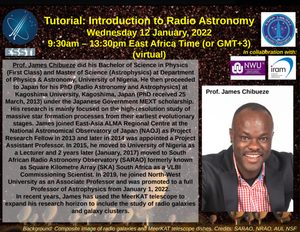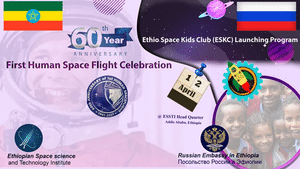Geophysical Applications of GOCE Data over Ethiopia Gravity Field, Moho and Stress Modelling
Andinet Ashagrie Gedamu
Prof. Mehdi Eshagh (Main Supervisor)
Dr. Tulu Besha (Co-Supervisor)
10:00 – 12:00 AM
December 15, 2021
Fikir Plaza, 6th Floor, ESSTI-2 Seminar Room, Room No.: 602
Geodesy and Geodynamics Research and Development Department
Entoto Observatory and Research Center (EORC)
Ethiopian Space Science and Technology Institute (ESSTI)
ABSTRACT
The Gravity field and steady-state Ocean Circulation Explorer (GOCE) is a satellite mission designed to determine the stationary part of the Earth’s gravity field and geoid with high spatial detail and accuracy. It also provides a new understanding of the physics of the Earth’s interior including geodynamics associated with the lithosphere, mantle composition and rheology, uplifting, and subduction processes. The objectives of this study are to investigate the applications of the GOCE mission for modelling gravity field, Moho depth, effective elastic thickness of the lithosphere, and lithospheric stress over Ethiopia and its surroundings.
The gravity field of the study area was modelled by recovering the gravity anomaly at the mean sea level from the GOCE diagonal elements of the gravitational tensor using the inversion of an integral equation. We have considered the Laplace condition of the diagonal elements of the gravitational tensor for recovering gravity anomaly based on radial, horizontal components and their combination. The error of the estimated parameter based on the joint inversion is about 2 mGal. The study result showed that the recovered gravity anomaly gave a minimum root mean squares error at a spherical harmonic degree of about 200 when it is compared with the GOCE TIM-R5 Earth gravity model.
We further estimated the Moho depth and effective elastic thickness of the lithosphere over Ethiopia. The GOCE 2nd-order radial derivatives are inverted using an integral equation in combination with effects of topographic/bathymetric, sediment, and consolidated crystalline masses considering density contrast model derived from CRUST1.0. Former studies suggest that Afar and the Ethiopian Plateaus are not in a complete isostatic equilibrium, indicating the presence of the mantle plume effect over the study area. We estimated the Moho depth using the Vening Meinesz-Moritz (VMM) theory of isostasy considering the effect of dynamic uplift due to mantle plume. The inclusion of the mantle plume effect showed a reduction of root mean squares error from 5.6 km to 4.1 km when the GOCE derived Moho model over Ethiopia compared to the local seismic stations. In addition, including the dynamic effect reduced the mean value to zero, suggesting the removal of systematic error in the Moho model. Similarly, the effective elastic thickness of the lithosphere (Te) was estimated over Ethiopia and its surrounding region using a method that combines the Vening Meinesz-Mortiz and flexural theories of isostasy in a spherical harmonics domain. We found a significant improvement of the solution in Te estimates with the consideration of the mantle plume effects when we compared it with other previous studies, especially in Afar, the Ethiopian plateaus, and the Main Ethiopian Rift valley.
Finally, we applied the GOCE derived Earth Gravity Model and lithospheric structure models to estimate stress tensor inside the lithosphere. We assume the lithosphere as an elastic shell and applied the horizontal shear stresses due to mantle convection as boundary-values for estimating the propagated stresses at the Moho boundary. In addition, we incorporated the vertical stress due to the mantle plume as an additional lower boundary-value at the base of the lithosphere. The boundary-values at the top and base of the lithosphere are used to solve the boundary-value problem of elasticity that is used to compute the stress inside the lithosphere. We estimated the six-element stress tensor for three cases: considering boundary-values of stresses due to mantle convection, mantle plume, and their combination. For each case, we estimated the maximum shear stress and its direction. The result showed that the estimated horizontal stresses are consistent with tectonics and seismic activities. Moreover, the maximum shear stress directions found in this study are highly correlated with the one presented in World Stress Map 2016 especially when we consider the mantle plume effect only suggesting the stress in the study area can be explained by the contribution of a mantle plume.
Keywords: CRUST1.0, effective elastic thickness, gravity anomaly, lithospheric stress, Moho


